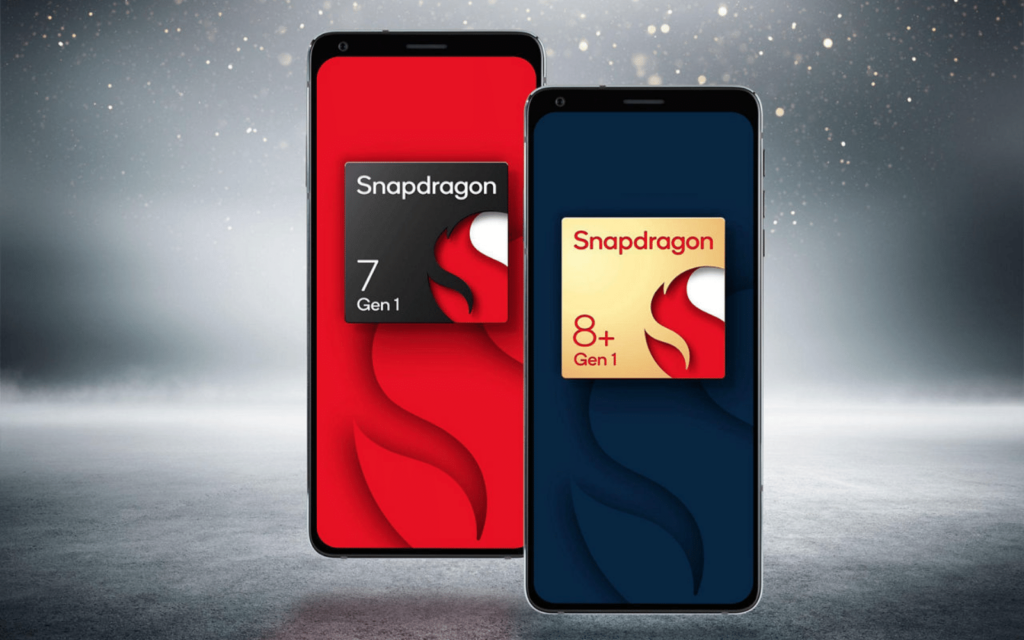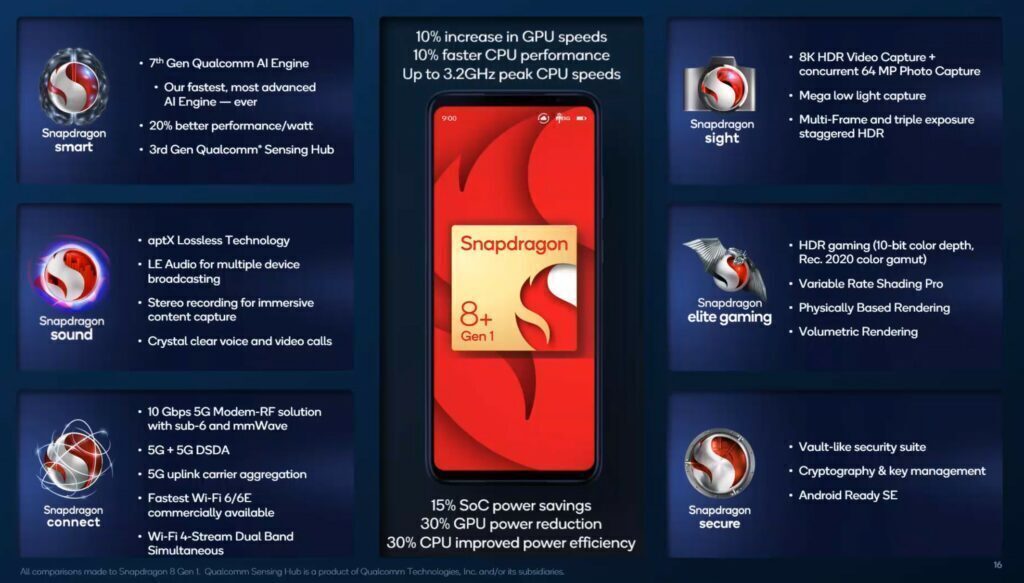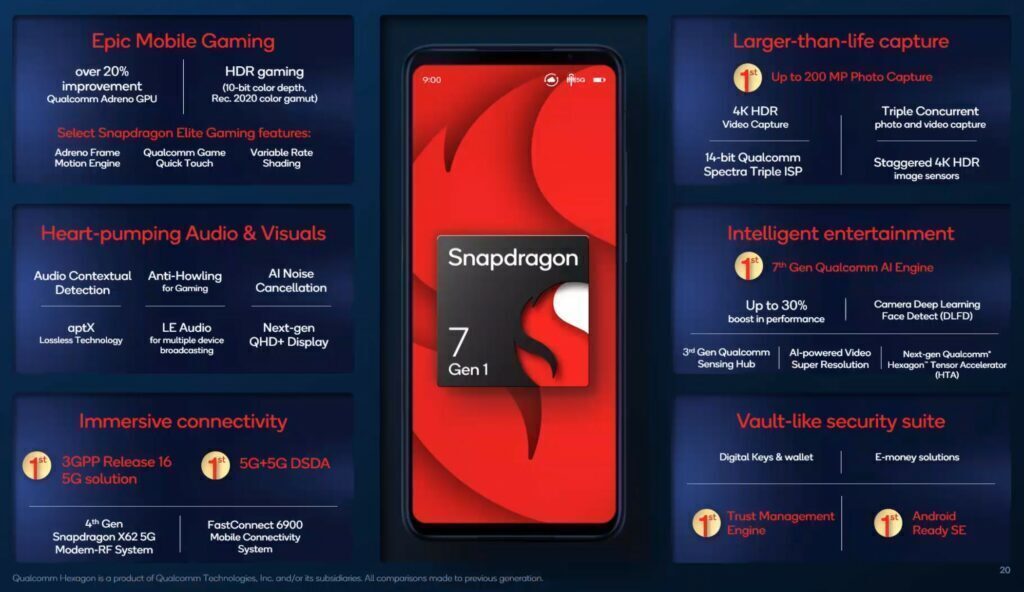When Qualcomm, towards the end of last year, announced its then flagship, the Snapdragon 8 Gen 1, the new chip offered a performance increase of around 20% over the previous flagship, the Snapdragon 888, while using 30% less power.
With the Snapdragon 8 Plus Gen 1, those increases have been further improved upon. But not by much. Qualcomm has managed to eke out an extra 10% in CPU and GPU performance with 15% less power consumed per chip.
Shouldn’t this be Snapdragon 8 Gen 1.5?
Qualcomm is making a fuss about this new chip’s sustained performance. That’s how long the chip can stay at its max clock speed while it heats up and chews through power, albeit 30% less of it. And it would. This isn’t as big of a deal as the 8 Gen 1 was when it came out so the company needs to make a fuss of whatever it can.
The company didn’t use the handy infographic to explain where it found all this extra performance and efficiency, but AnandTech reports that it’s because the manufacturing process of the chips has moved from Samsung to TSMC. If that means nothing to you, then try this – TSMC good, Samsung… 10% worse.
You got any games on your phone?
Alongside the newly improved flagship, Qualcomm also announced the Snapdragon 7 Gen 1. This is the next generation of SoC aimed at gaming-focused devices. This one boasts a 20% graphics performance improvement over the previous Snapdragon 700-series chips. It will also borrow a few features from the previous flagship, like the “Adreno Frame Motion Engine”. This makes games seem more fluid by increasing the framerate with interpolation.
That’s all well and good, but according to The Verge, Qualcomm’s press release indicates that most gaming phone manufacturers are opting for the more powerful Snapdragon 8 Plus Gen 1. Honor, Oppo, and Xiaomi are the only companies listing devices that feature the 7 Gen 1. Almost everyone else is opting for the big-boy chip.
Qualcomm says devices that feature the 7 Gen 1 are expected in Q2 2022 and devices built on the 8 Plus Gen 1 in Q3 2022. While these new chips offer improvements, we still don’t think they’ll be able to hold a candle to Apple’s silicon. At least, not for another few years at least.
Source: The Verge






